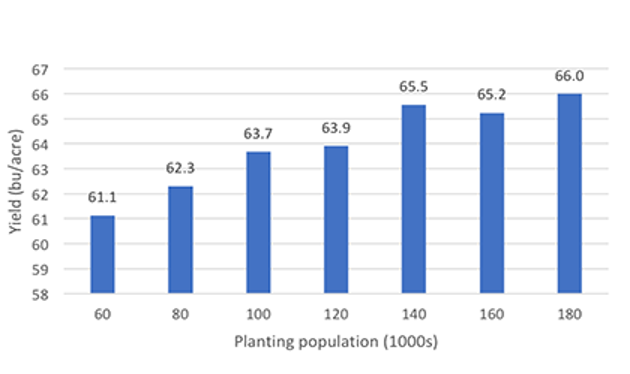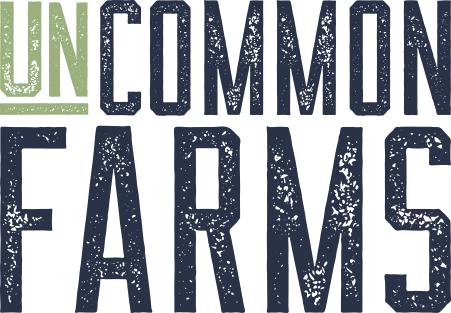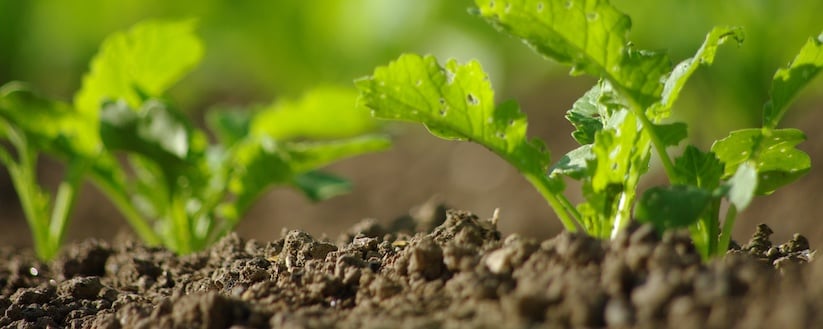We all acknowledge that farming costs are insane this year. We’re seeing this across industries, but the ag industry seems uniquely affected by the global climate. We rely so heavily on foreign markets and supply chains that are intact and uninterrupted that it should come as little surprise when we get hit with some of the steepest price increases around. It’s not only the skyrocketing fertilizer costs but all our input costs: equipment, pesticides, and seed are going up right now, too. It can be a bit disheartening.
Humans, however, are extremely adaptable. You could say it’s our superpower. I predict that we’ll see that this year as some farms navigate this difficult situation and not just survive but thrive. My money’s on our UnCommon Farms teams leading that charge. In fact, some of our members are making smart moves that can greatly help out right now. Today, I’m going to outline one area where you can likely reduce your input costs year over year without losing significant revenue.
Soybean Seeding
*Note: The following research was done among typical-branching soybeans. If you have varieties that are specifically non-branching, like ultra-high protein varieties, this research may not apply, and you’ll want to look into that separately.
How can different planting populations affect yield?
Soybean planting population has been an interesting conversation over the last five years. Planting in 15” rows at high populations used to be a rule of thumb that most people followed. Closing the canopy quickly was the number one goal, and the constant war was always with weeds. While competing with weeds is still a large concern, we eventually started to understand that soybean plants also compete with each other. It isn’t team soybeans vs. team weeds; for soybeans, it’s every plant for itself!
As it turns out, soybeans are highly adaptable and love having room to grow. They’re basically a shrub, after all. If given the proper space, soybeans can make numerous nodes and branch out wide and tall, making them almost unrecognizable compared to the thigh-high matte of plants you’re used to seeing in fields. Is this a recommendation for 30” rows? Not necessarily. It’s a method that works for some and not others. You have to know what works for you on your land. You may have a real battle with weeds that you can’t afford to give an inch on. The point of this article, however, is not about row spacing; it’s about population. In recent years, farmers and crop scientists have been toying around with reducing seeding populations to reduce costs. In soybeans, the results are interesting. This is an excerpt from an article on Farm Progress[1]:
In 2016 and 2017, SDSU researchers examined seven planting populations ranging from 60,000 to 180,000 seeds/acre on two planting dates (early May and early June) at four locations in eastern South Dakota. All plots were planted using conventional tillage in 30-inch rows. Yield levels tended to be higher for the early May planting versus the early June planting, although this relationship depended on the timing of precipitation events. Many university researchers recommend to increase planting rates at later seeding dates to compensate for less vegetative growth and a reduced grain fill period. However, in this study, the most economically viable planting population for soybeans was found to be 140,000 seeds/acre for both the early and late planting dates. Yield results for each of the seven planting populations averaged over two planting dates are shown in Figure 1.
Figure 1. Yield levels for seven soybean planting populations in eastern South Dakota.
How can you use this information on your farm?
There are a few things to note about this study: First, the yield difference between 180,000 seeds and 60,000 seeds was only 5 bu/acre. That’s less than half the seed for only a 5-bushel decrease. I’m not saying you should go that low, but numbers like that make you think. Second, this article is showing the most economical choice was 140,000 seeds/acre, but that was in 2016 and 2017. The landscape has changed dramatically since then. Maybe that’s still the case with high grain prices, but as seed prices start going up to match that, you have to wonder. Third and most importantly, this study was not done on your ground. It wasn’t done on your farm, so this model won’t perfectly fit your outcome.
One Farm’s Results
To demonstrate this, I’ve asked one of our members, MBS, to reveal how reducing their soybean seeding population has affected their yields. They have dropped their seeding from 140,000 seeds/acre to 125,000 seeds/acre with no average yield loss. That comes out to about $6/acre of savings in seed cost, and that’s a conservative estimate considering the recent increase in prices. That number could easily become $7 or more per acre, and that’s year over year. They have saved themselves tens, if not hundreds, of thousands of dollars in input cost over the years without losing much revenue because yield has remained flat. Furthermore, the gap between what they’re spending versus what they would have otherwise spent will widen over time.
Test Before Full Implementation
This comes with a quick word of caution. MBS didn’t just switch their planting rate on a whim. They did block and strip tests on multiple fields over multiple years until they had seen enough evidence to start reducing their rate. Only make major shifts like this after you’ve seen enough evidence on YOUR FARM that it works—and that goes for any changes you’re thinking of implementing. Whether you’re thinking about trying a new hybrid or chemistry or investing in biologicals, make sure you see the benefits firsthand on a small number of acres before you start transitioning. Don’t get yourself in a bind you can’t get out of.
With that being said, from an agronomic perspective, it may be safe to say that the world of farmers is, on average, planting their soybeans too thick. I wouldn’t be surprised to see the “rule of thumb” planting rate for farmers come down below 120,000 over the next few years, possibly even going lower than that, especially as new and improved hybrids hit the market. Understand, however, that your ground is unique. Don’t let general consensus be a rule, but use it as a guideline that you can play around with. What may work for Bob down the road may not work for you, and vice versa. However, if you want to give reducing your population a try, I say go for it. If you don’t know where to start or if you have any questions on how to do a good field trial, the team at UnCommon Farms can help.
[1] Kleinjan, Jonathan, et al. “Soybean Planting Population: A Review.” Farm Progress, 30 May 2018, https://www.farmprogress.com/soybean/soybean-planting-population-review.



